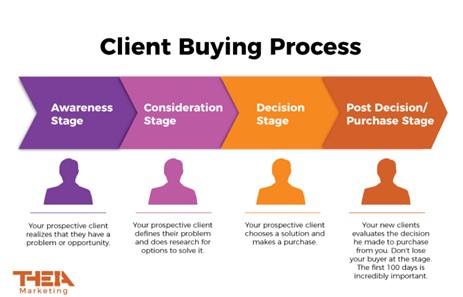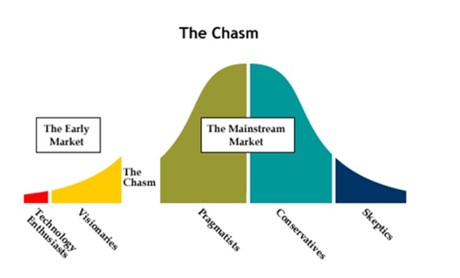Product/market fit is not a one-size-fits-all process, nor is it a one-time event. It is an iterative process that demands the continual collaboration between the product, marketing, sales, services, and leadership teams of a company.
PMF is a necessary evil because it helps validate a business idea or a product that has not officially been launched into the market. Without this validation, a business cannot grow nor scale, and it cannot sell its products to the right audience.
To determine that your product(s) are being marketed and sold to groups of people who see the value in it, accept the product, and want to buy it, businesses need qualitative data that backs up this claim.
However, not every product finds a good market fit. There are several reasons why this may happen.
Most businesses want to achieve PMF as soon as possible
Product/market fit is not a natural response to satisfying a customer base's needs in a specific market.
It is important to create products that serve a market with enough demand and with plenty of eager customers eager to have the solution the product provides.
Acquiring PMF is only the first step toward learning how to adapt your business processes to resonate with your target audience and generate brand loyalty in the future.
Ignoring your business's lack of product/market fit can have devastating effects on your future business growth. You could be missing out on many enthusiastic consumers eager to purchase a product like yours and the success of a fanbase like this.
Reasons why you do not have PMF
Whether your product was introduced into the wrong market or your marketing message is off, ignoring the telltale signs of below-average sales, low demand, or poor customer reviews is never a good idea.
Reason #1: There is not a big enough market need for your product
Choosing a profitable market with enough demand for your product(s) in search of the solution(s) you offer is one of PMF's first ingredients. This includes market size, the industry's overall willingness to act on something, to buy, and to pay, and how much to pay for your product.
It also entails how successful other products like yours have been in the past, the current legal or economic restrictions that could hinder your product's receptivity, and overall staff churn cycles.
Choosing the wrong market to sell in hinders any success from the get-go.
Nothing is worse than investing time, money, and other resources for any amount of time in an industry that does not appreciate or require your product.
Actionable advice:
This is likely a no-brainer: withdraw from your current market and choose a more suitable one.
For some companies, this may be too much to ask. A low starting capital, lack of investors, or shortage of qualified staff can factor into the complexity of focusing on a more profitable market.
For this reason, any business should research their target audience to determine who they should be selling to.
Jonathan Newar, CEO of Captain Experiences, had this to say about researching your target market. "A lot of the setbacks we encounter in market fit [are] due to lack of research. If we feel we have a good idea of the market, we will benefit from [finding] out we haven't really zoned in it correctly, [which] always sets us back in a big way. Correcting your branding to fit the market you have chosen is difficult and relaunching is just as time consuming."
If you have been pursuing a specific sector for some time now and have not seen enough customer demand, customer retention rates are low, and your business is not growing, conducting in-depth research into that market may be the best thing you can do.
Reason #2: You are not sure about your buyer persona(s)
Your company buyer personas should reflect your target customer's needs, pain points, and buying decisions.
Be mindful that your company value proposition aligns with the ideas expressed by the people you want to sell to.
Consumer attention is only a part of the client buying process. Customers generally need more from a product to feel incentivized to purchase it.
You need to appeal to a specific group of people with common goals to help them.
Actionable advice:
Taking the time to research your buyer personas and collect data to back up your hypotheses is ideal for creating a product that will produce value to them.
Selling a product to someone with no genuine interest in it is always a recipe for failure.

Reason #3: Your product does not have a defined client buying process
Once a prospect is interested in a product, the client buying process dictates they will want to research similar alternatives, test them out, read customer reviews, and consult with other decision-makers (in the B2B space).
However, if your marketing team has not foreseen the process every prospect undergoes before deciding to buy something, you will likely not make many sales.
If your business is not selling enough, you have insufficient data to determine if you have or have not found a product/market fit!
Actionable advice:
If your buying process has no clear follow-up, leads are not persuaded to maintain your product's active interest.
To ensure continued interest and increase the chances of a future purchase from every lead, follow up with prospects using lead nurturing tactics. These strategies will help cost-effectively improve your marketing and bring in more customers.

Reason #4: Your product does not provide a solution that customers can easily buy
For a product to be easily bought, the customer must feel convinced that the product will be useful to them in a meaningful way.
While consumers buy things they may not have much use, most B2B and technical companies offer products to provide value. Providing value requires resolving a problem significant enough for the individuals your business targets.
Other factors that determine if a product can be easily bought include how convenient it is for the consumers, its affordability, and its ease of use.
Actionable advice:
Market research, including research on buyer personas and estimated market share, is likely your best bet to determine how high of a demand your product could potentially have.
Reason #5: Your product does not solve a pain point that is urgent enough
Reasons numbers 4 and 5 closely intertwine.
The 2006 book titled "Closing the Chasm" explains why some startups fail to create products around problems that continuously afflict their target markets.
The author, Geoffrey Moore, explains there is a gap between those he calls "visionary early adopters" (the people who build the product and the individuals who give their opinions in the beginning stages of finding PMF) and the "mainstream market" (those who are meant to buy the product).
If a startup does not conduct enough research on its target audience's pain points, it is likely to build a product based on the visionary early adopters' feedback, not those who share an acute pain that the product could solve.
Actionable advice:
During the initial stages of building your product, make sure the feedback your product team receives not only comes from the visionary early adopters but from the people for whom the product is created.
 (Source: Startify7)
(Source: Startify7)
Reason #6: You tried to scale your business too soon
While it is tempting to scale your business at the first sign of revenue traction, paying attention to the data you may have on hand and any core aspects of what you are doing that deliver value to your target audience are the best route.
If you do the opposite, your business runs the risk of branching out too much, and niching down may be more challenging.
Before trying to scale your business, make sure you see the telltale signs of a possible product/market fit.
Actionable advice:
Watch your sales revenue and the way your current customers respond to your product and your business. Are you continually receiving positive reviews about your product? Are the same customers purchasing your product more than once?
If you try to scale too fast, you run the risk of moving forward on a product and marketing and sales message that does not reflect your ideal customer wants.
Waiting to scale until after proving you have PMF can generate a lot of success. For example, YouTube was originally meant to be a dating site where users could upload a video of themselves to attract potential dates. However, it did not have much traction and instead allowed users to submit videos of their pets, hobbies, and vacations.
Instead of scale their original dating idea massively, they allowed their audience to dictate the website's direction.
Reason #7: There are issues with your sales cycle
The average sales cycle for B2B is approximately 102 days. This is comprehensible; a company may have multiple decision-makers to run the purchase by, it may need to learn more about the product and compare other options to find the right fit.
However, if your product is on sale for a low price and takes more than 102 days for a prospect to decide to buy it, your business likely has issues with its sales cycle.
Actionable advice:
Good salesmanship without product/market fit is not possible.
Even the most capable salesperson will have difficulty persuading others to purchase a product that does not solve a significant pain point or that they do not have a real interest in.
The key is to identify situations where this balance is off and the sales pipelines giving attention to unqualified prospects.
Therefore, it is best to focus on strong sales qualified leads (SQLs) that align with your buyer personas. When interacting with these individuals, it is best to highlight how your product can provide them with real value.
Conclusion
The road to finding a product/market fit is full of potential risks. If your team is not careful, it could make any of the mistakes highlighted above and delay your company's efforts to attain PMF.



